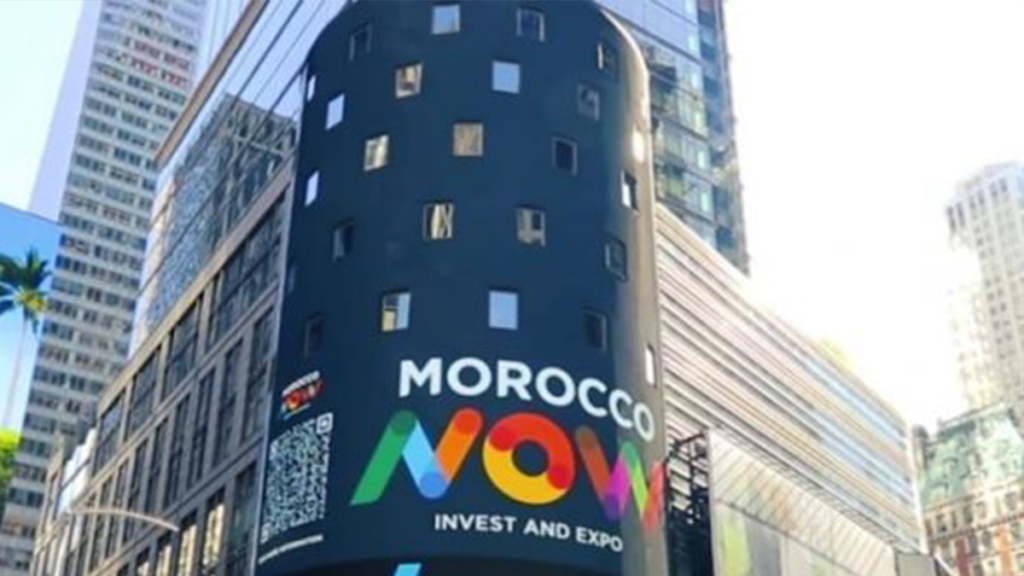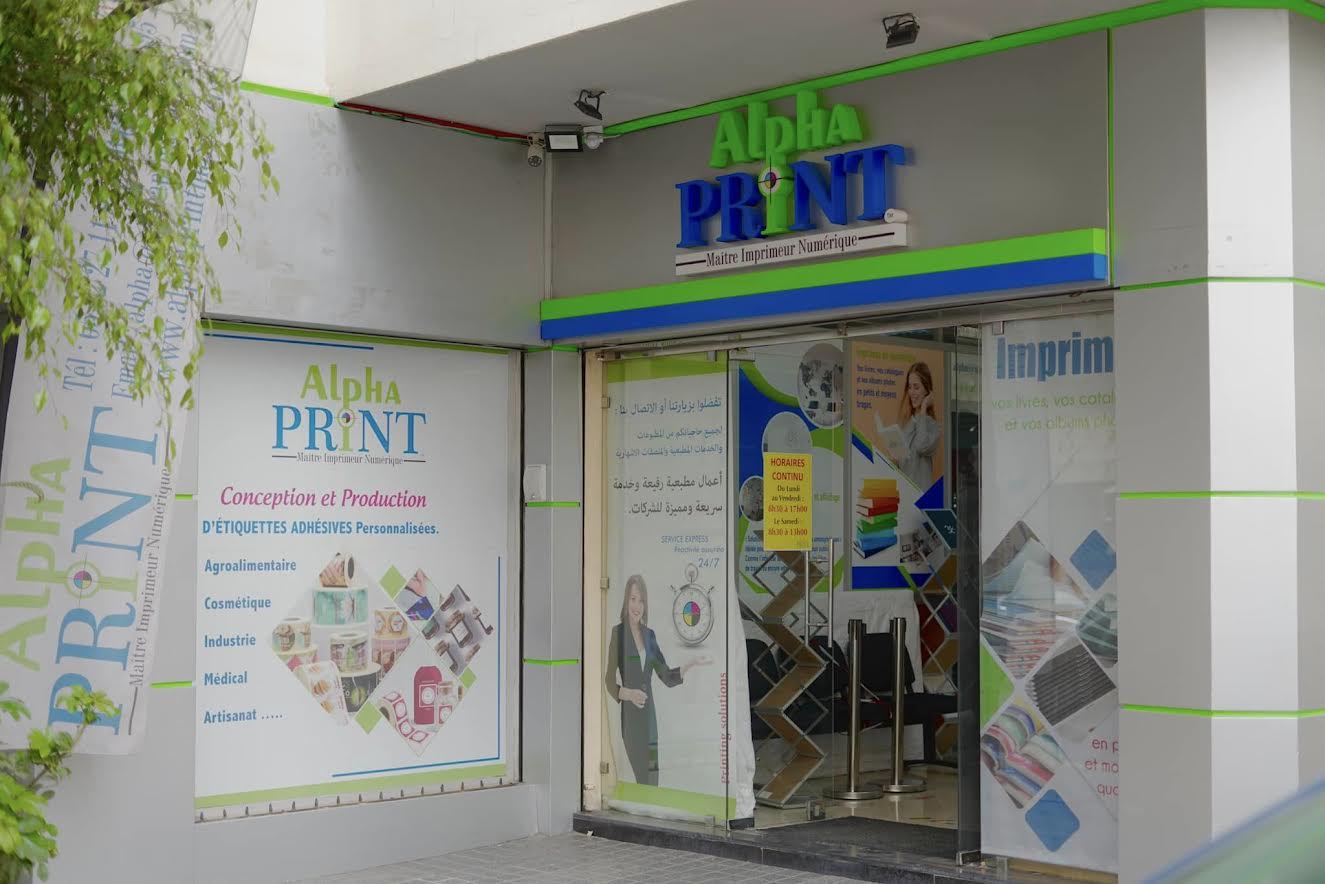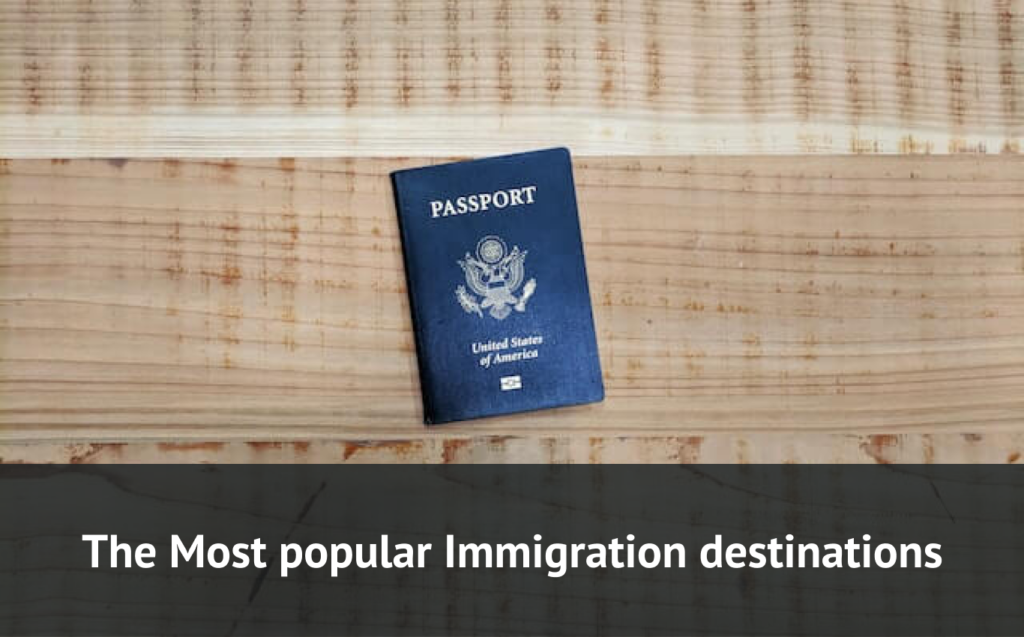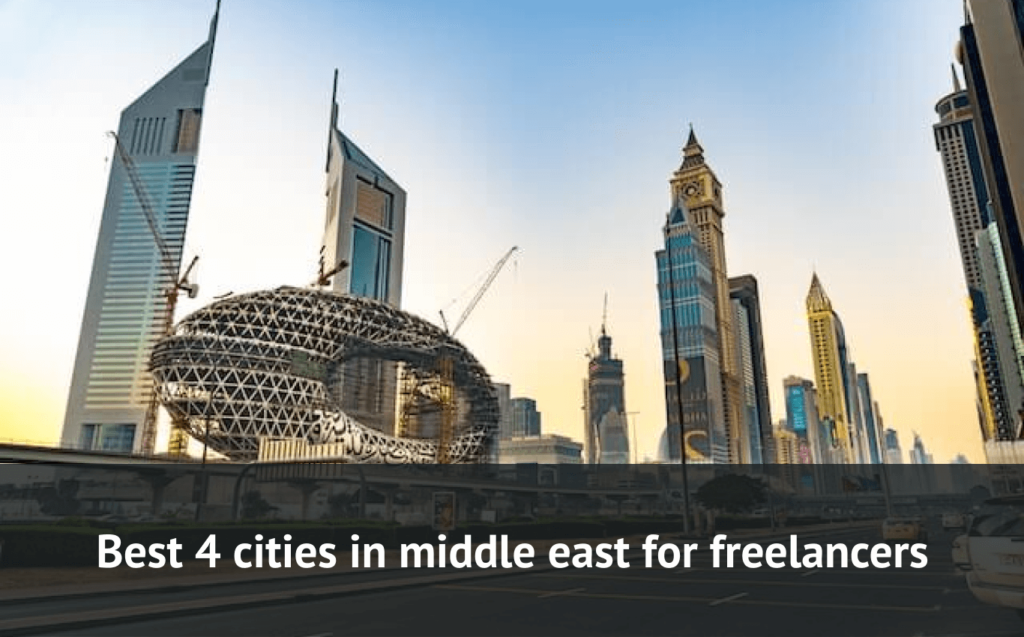 POSTES INTERNATIONALES DU MAROC
POSTES INTERNATIONALES DU MAROC
All You Need to Know About Africa’s Most Emerging Investment Hub
First appeared during the global platform of the Expo 2020 in Dubai, Morocco Now is a new economic brand launched last October by the Moroccan Agency for the Development of Investments and Exports (AMDIE). The brand aims to draw international investors’ attention to Morocco as an emerging, stable, and confident market with a strong network in Africa, Europe, the Middle East and North Africa. In this article, put together as part of a collaborative project by the students of Exchange Lab, we attempt to shed more light on the North African kingdom that has the highest growth rate in Africa and which has recently been featured in a plethora of reports by renowned institutions as a promising haven for investment.
Najate Id Said, Afifa Jabrane, Mehdi Salim (Morocco: Country Background)
Marwa Erraji, Imane Raqi, Azeddine Aiyar (Why Invest In Morocco)
Fatima Ezzahra Fikri, Hajar Kaouch, Cherif Ramzi (Morocco’s Industrial Achievements)
Ezzoubeir Jabrane (Editing)
I. Morocco: Country Background.
Geography
Morocco is located in North Africa along the Atlantic Ocean and Mediterranean sea, connecting sub saharan africa the middle east and Europe, and enjoys a unique geographic diversity. It is bordered in the north by the Strait of Gibraltar and the Mediterranean Sea; to the south by Mauritania; to the east by Algeria; and to the west by the Atlantic Ocean, and stretches across a land Area of about 710,850 Km². The country is home to three main mountain ranges, Rif, High, Middle and Anti-Atlas, comprising the highest mountain peak in the MENA region. A number of rivers flow throughout the country, including Draa, Oum Er-Rbia, Moulouya, Sebou, Dades, Bou Regreg, to name a few. 4 different natural features determine the country’s geographic identity: The Atlas Mountain range is the most impressive feature of Morocco’s landscape and separates the Mediterranean sea from the Sahara Desert. The Rif is a mountain range that extends from Tangier in the north-west to the Moulouya River in the east, the Mediterranean Sea in the north and Ouargha river in the south. In the south lies the Moroccan Sahara desert. And last but not least, Morocco’s coast extends over 3,500 km, divided in two coastlines: the Atlantic: 2,934Km and the Mediterranean: 512Km.
Climate
The climate in Morocco is remarkably less diverse as it has a Mediterranean climate that is generally hot and dry for most of the year, with cooler, though still mild temperatures, and rainfall between November and March, with average yearly rainfall of 1,200 mm. Temperature in the southern and south-eastern desert areas can be extremely high, but drops substantially in the higher mountainous areas, to freezing points at night occasionally. Temperatures along the coast in the summer range from 18°C to 28°C and can reach up to 35°C in the interior. In the winter, temperatures along the coast range from 8°C to 17°C and can drop below 0°C in the interior mountain areas.
Population
The current population of Morocco is 37.5 million as of December 2021 according to Worldometer, which is equivalent to 0.47% of the total world population. The population is considered demographically young with a median age of 29.5 years. The Moroccan population is characterized by an incredible ethnic diversity, and it is mainly made up of Arabs and Amazigh, who constitute 99% of the population, while mixed or black Africans, Jews, and foreign communities make up the remaining 1%. Constitutionally, Morocco is a Muslim country ruled by King Mohammed VI, the ‘Commander of the Faithful’ (amir al-muminin). This title is based on his direct descendant from the Prophet Muhammad. 99% of Moroccans are Sunni Muslims, and less then 0.1 % of the population is Shia Muslim. Also, less than 1 percent of the population are Christians, Jews, and adherents of other faiths.
Languages
The cultural richness and the ethnic diversity of Morocco has an enormous impact on the linguistic landscape in Morocco. The country’s official languages are Tamazigh and Arabic. The latter is the most important in education, and represents the administrative language of the country. Morocco’s dialects are Darija, the Hassani variety that is spoken in the south of Morocco, and Judeo-Moroccan Arabic, a variety of the Arabic Language spoken by a tiny Jewish Minority. Due to France colonisation of Morocco between 1912 and 1956, French is an important language in Morocco, and it is used in business, diplomacy, and government. For the same reason, Spanish is spoken in the North of Morocco, though less widely. A more recent constituent of Morocco’s linguistic landscape is English. The latter is the second forein language but the fastest growing language in Morocco. A recent report indicates that Moroccans expect English to become the most significant foreign language in the next 5 years.
Natural Resources
Some of Morocco’s most significant natural resources are fish and minerals, The north African country contains a battery of minerals that include phosphate, iron ore, lead, copper and gold among others. Phosphate reserves are believed to account for almost 75% of all the phosphate reserves globally and was ranked as the second-largest producer of phosphates behind China in 2015. Morocco’s fish reserves are one its strong aspects of natural resources. Some of the fish species found in Morocco’s territorial waters include carp, black bass, and trout. The country is also endowed with numerous exploitable resources, most notably a massive fertile land, with around 85,000 square km of arable land.
Overview of the Economy
Morocco’s great openness to the outside world and its strong relations with close countries make it one of Africa’s most advanced economies. Various free-trade agreements have been signed between Morocco and its economic partners that include the United States, the European Union, and several Arab and African countries. As far as the African continent, which has been a priority for Morocco since the enthronement of His Majesty King Mohamed VI, Morocco has been striving to reinforce its south-south cooperations, which resulted in the signing of over 1000 MoUs with more than 40 countries. The country’s direct investments in sub-saharan Africa have also grown accordingly, ranking it as the 2nd major African investor and the first investor in West Africa with over $ 3 billion in the last 10 years. Added to this, Morocco has been working on establishing itself as a major export platform for investors seeking to penetrate Africa’s high growth potential markets. In this context, a battery of efforts have gone into the establishment of platforms, such as Casablanca Finance City, that offer international investors privileged access to opportunities of investments.
III. Why Invest in Morocco:
Political Stability
Morocco has introduced several reforms since the enthronement of King Mohammed VI in 1999, that culminated in positive reviews of the country’s political stability, most recently the 2nd Foreign Direct Investment destination in Africa by Ernst & Young Survey in 2019, and the 2nd Country Where To Invest in Africa by Rand Merchant Bank in 2020. The first reform came after the Arab Spring, and brought about a new constitution as a crucial step to reinforce the country democratic process. Additionally, other reforms took shape to counter terrorism especially with the instability witnessed in North Africa and Sahel over the last decade. The political ecosystem had been concerned just in the same way by a noticeable transition. As an illustration we can mention the ministerial reshuffle in 2019, and reduction of ministerial positions from 39 to 24. Lastly, the king, by taking large initiatives to improve the social and economic situation throughout the country and especially in the rural areas, has been very much acclaimed by the people. Therefore, the political situation in Morocco is rather stable, and places the country as the most reliable partner in the region.
Free Trade agreements
Morocco has in its assets 75 bilateral investment treaties, and 60 economic agreements. These agreements and treaties are meant to promote investment and facilitate trade by reducing the tariffs on the products and services produced in one country and traded in another. The EU-Morocco Association Agreement came into effect in 2000 and allowed the concerned parties to create a free trade zone starting in 2012. The United States has also signed a free trade agreement with Morocco, and as with the European Union, Morocco has benefited from preferential and low tariffs on more than 95 percent of qualifying consumer and industrial goods, while the US has accessed new markets in the African continent. In fact, since Morocco has ratified agreements with 43 African states, it has been considered a gateway to Africa for foreign investors, which constitute a huge market of over 1.2 billion people, not to mention other agreements with other countries like Canada or most recently Japan. All these agreements have helped Morocco position itself as a regional trading hub and enhance its attractiveness to investors.
Infrastructure
Over the last twenty years, Morocco has invested massively in infrastructures, which have improved the country’s competitiveness and its attractiveness to foreign investors and has contributed to economic growth and poverty reduction. We will focus on 5 types of infrastructures: Electricity and Sanitation, Roads, Airports and ports, Tramway and High-Speed Trains and renewable energy.
1- Electricity and Sanitation
Access to electricity is universal, as is access to drinking water in urban areas.
2- Roads
Morocco has one of the best road systems on the continent. Over the past 20 years, the government has built approximately 1100 miles of modern roads, connecting most major cities via toll expressways. In addition, Morocco has an extensive road network of 60,000 km, one of the best railway networks in Africa.
3- Airports and ports
Tanger Med appears to be the best port in the Mediterranean Sea and in terms of airports, Morocco has 25, 19 of which are international. Moreover, Morocco has 27 commercial ports that handle 92.3 million tons annually in merchandise traffic
4- Tramway – a High-Speed Trains
The Tanger-Casablanca 225-mile high-speed rail line was inaugurated in 2019. Concerning tramways, Casablanca will complete two new tram lines by 2022, Rabat’s tramway system connects multiple points in Rabat and the neighboring town of Salé. Other large cities, such as Agadir, Fez, Marrakesh, and Tangier, also plan to build tramways.
5- Renewable energy
Morocco is ranked third in the world in the 2020 Climate Change Performance Index for its aggressive development of domestic renewable energy sources and reduction of greenhouse gas emissions.
Labour Market:
In the next decade, the active population of Morocco will increase by 0.2% compared with the previous decade. This justifies the observation that there is a continuous pressure on the labor market. The active population at the national level will reach 14.2 million in 2030, compared to 12.08 million today. Twenty years later, the number of people in the labor force will slightly exceed 16 million.
Going forward, the Government has launched multiple initiatives with ambitious goals to promote employment. The National Agency for the Promotion of Employment and Skills (ANAPEC) launched its 2020 Vision in 2015 to expand the agency’s coverage to also include unqualified job seekers. ANAPEC also launched three active labor programs: Idmaj (wage subsidies for unemployed graduates); Ta2hil (youth training); and Moukawalati (entrepreneurship promotion through training and financial assistance). In parallel, relevant ministries have embarked on three strategies on:
youth integration, which plans to improve the training system and integrate youth into the labor market through internship or skill matching;
(ii) employment, which aims to increase employment and productivity;
(iii) microenterprise promotion, which intends to support microenterprise financing.
On the demand side, many sectoral plans (e.g. Morocco’s Global Jobs and Moroccan Green Plan) aim to promote job creation through macroeconomic and sectoral policies (e.g., compensation reform, flexible exchange rate policy, pro-growth sector strategies.
The Industrial Ecosystem
The Industrial Acceleration Plan 2014-2020 has introduced a new approach based on the establishment of industrial ecosystems. This is a flagship project of the new industrial strategy which aims to improve sectoral integration, to leverage investments and to ensure an increase in the value of the industrial sector by promoting the establishment of targeted strategic partnerships.
The plan is also intended to strategically position Morocco’s industry within global supply chains. To achieve this, it will develop industrial ecosystems around clusters that align, establishing increasingly lean and efficient manufacturing value chains :
Exports : The sector created 288,000 jobs, amounting to 58% of the original target. Industry has been identified as a key sector that could help address the country’s unemployment problem.
Automotive : The sector targets a production capacity of 1m vehicles between all manufacturers, for annual export turnover of €17.9bn and an integration rate of 85% by 2020.
Offshoring : The sector in Morocco has also experienced a period of continuous growth over the past few years. By 2020 the sector is expected to generate Dh16bn (€1.4bn) and generate around 100,000 jobs.
Agro-Industry : The sector is an important foreign currency earner for Morocco. Furthermore, agro-industry accounts for nearly one-third of the country’s industrial capacity with Dh116bn (€10bn) of yearly turnover and employing 143,000 people
III. Morocco’s Industrial Achievements
Renewable Energy
Since 2000, Morocco has adopted an ambitious energetic transition from an energy mainly based on imported oil to a renewable energy. Thanks to its considerable potential in solar energy, wind and Hydro-power, Morocco plans to produce 52% of its electricity from green energy by 2030. To bring The renewable development plan to the fore, the government has focused on three prominent projects. With 10 wind projects already installed in different cities around the country, Morocco has maximized its productivity of the wind source, reaching more than 1GW of its overall green energy. In addition, Morocco has featured mobile parabolic mirrors and solar towers as two technologies used in their 4 solar projects to enhance the capacity of generating 1800MW each. The country also constructed plenty of pumped storage power stations to reach 2,000 MW of installed hydropower capacity by 2020. As a result, hydropower has provided 22% of its green power. It should be noted that Morocco’s efforts have led to its ranking as the world’s seventh-best country in the 2016 Climate Change World Report and one of only five countries to have satisfactory ratings in slowing down and combating global warming.
The Pharmaceutical Industry
After phosphates, the Moroccan pharmaceutical industry constitutes the second largest chemical industry in Morocco, and ranks second in the African continent, With nearly 40 laboratories, 33 production sites, 50 distributors and more than 11,000 pharmacies. Moroccan firms specialized in the field have gone beyond national territories and established production units in a number of African countries. In 2013 Moroccan Sothema inaugurated West Africa Pharma, a manufacturing unit in Senegal that produces generic drugs for the Senegalese market and member countries of the Economic Community of West African State. In 2014 Morocco’s Cooper Pharma, which has invested in more than 10 countries across Africa, signed an agreement with Côte d’Ivoire to set up a drug production unit as the firm tries to consolidate its regional presence. Moreover, the advanced pharmaceutical ecosystem has been attracting leading international players, such as the French pharma giant, Servier, which inaugurated a new production unit in Nouaceur, near Casablanca, in 2017. In the same vein, Mylan Pharmaceuticals Inc., a world leader in generics and biosimilar drugs, launched its first pharmaceutical production unit in Morocco in 2019.
More Recent efforts have been made to promote the pharmaceutical industry’s position in Africa. In July of the current year, King Mohammed VI of Morocco presided over the signing ceremony of three agreements in Fez to launch the project of manufacturing and packing COVID-19 vaccine as well as other vaccines, with investment of $ 500 million, in partnership with international companies. These include the Swedish company, Recipharm, which is the fifth largest pharmaceutical manufacturer in the world, and the Chinese company “Sinopharm” and the Société de Thérapeutique Marocaine, Sothema. This project will ensure self-sufficiency, enhance health security and make the Kingdom of Morocco among the major regional and international platforms in the pharmaceutical and biotechnological industries
The Automotive Industry
The automotive industry in Morocco has sustained high levels of growth rates in the last few years. This performance allowed the country to be ranked as the first manufacturer in Africa and has been achieved thanks to the efforts of the government in implementing strategies, offering numerous tax incentives, and setting up reliable industrial frameworks that caught the interest of leading car manufacturers worldwide. These efforts have made it possible for Morocco to generate more than MAD 72 billion of exports in the last decade, and transform itself into a leading automotive manufacturing hub in Africa, with an increase of 10.77% in new passenger vehicles as of 2021, generating $ 7 billion. Moreover, Morocco has a huge growth prospect as far as car manufacturing is concerned. Within the next five year, financial experts anticipate that the automotive sector will see an impressive $14 billion growth, which means a CAGR of 5,6%. Large Car Manufacturers have chosen Morocco as a destination for the immense opportunities for growth and development that it exhibits and the strong network in Africa and Europe.
The Aeronautical Industry
In recent years, the Moroccan aeronautic sector has shown great dynamism and remarkable growth. The development of varied sectors, especially in wiring, composites and mechanical assembly, has made Morocco a preferred destination for subcontracting in aeronautics. The recent establishment of other global players such as Bombardier, Eaton, Hexcel, Stelia and Alcoa confirms Morocco’s ability to attract industry leaders. In 2017, aeronautical exports exceeded $1.2 billion and jobs increased by 50 percent. By 2020, The development of the Moroccan aeronautics industry created 23,000 new jobs. The growth of the aeronautics industry relies on a highly professional and qualified supply chain of local subcontractors who have obtained certifications from international organizations.
The Textile Industry:
The textiles and clothing sectors in Morocco have always been one of strategic levers for the country’s industrial development. There are as many as 1200 factories across the country employing 185,000 people. In order to enable these companies to achieve their ambitions in upgrade, development and internationalization, Morocco has been allocating 3 billion dirhams per year between 2014 and 2120 as Industrial Development Fund (FDI). In this regard, Morocco has also launched the Made in Morocco Label to promote Moroccan manufacturing not only in the Kingdom but also in a slew of international markets. On top of this, Moroccan textile and fashion industries are currently implementing sustainable practices by adopting an eco-friendly approach in the development of their sectors.






